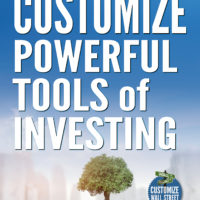I believe there is an approach by which every American who has the desire and motivation to build wealth for the future can do so.
Let’s be clear from the beginning: Reaching one’s goal or dream takes time, sometime many years, depending on the dollar amount desired. The other equally important element is some level (large or small) of continuous income or revenue from which to set aside and gradually build up the desired dollar amount.
The smaller the income one has, the longer the time needed to achieve the buildup of dollars. The shorter the amount of time left before wanting to achieve the goal, the larger the income stream needs to be. Depending on each person’s financial situation, and the amount of the person’s goal, the larger or smaller the size each element (time/dollars set aside) needs to be. The larger the money stream available, the shorter the time need; the smaller the money stream, the longer time that’s needed.
These two elements are different for every person’s age and financial condition. They can each be modified as the person deems best.
In my book Customize Wall Street, I introduce and explain what I call my 5 Key Questions of Financial Planning. Asking, and answering, these questions on an individual basis can provide a blue print or roadmap toward attainment of any person or family’s financial goals.
Let’s quickly look at the 5 Key Questions to let you know how basic and straightforward a financial plan can be for any of us who seek to have a better financial future. Here they are:
- What amount of money do you dream of accumulating as your goal?
- How much money do you already have to start your plan?
- How many years are you allowing to reach your goal?
- How much money can you contribute to your plan each year regularly?
- At what rate of return does your saved money need to grow?
I want to strongly emphasize that the answers to these questions can vary for any individual who seeks to implement a plan following this approach. It’s true that wealthier people with higher paying jobs can buildup larger amounts more quickly. But more modestly situated people, even those with low paying jobs, can still set goals, and follow the 5 Key Questions approach to achieve a financial goal realistically in line with their circumstances. We can all have goals, and we can all plan and work for those goals.
To show you how my approach works, and to let younger folks just starting out building a career, and possibly a family, know this can all work for any who exercise some discipline and vision of the future, I will use some realistic numbers to answer the five questions. As I present each of the five answers, you can scroll above to again see what they are.
Hypothetical scenario: Let’s imagine a young couple, each in their late 20s, have just given birth to their first child, for whom they wish to build up a college savings fund. They are a two-earner couple, each earning $35,000 annually (with normal employer benefits provided on both jobs).
- This question will be answered last, calculated by a computer after the couple supplies the answers to the last four questions. See below.
- Both sets of grandparents each gave a gift of $5,000 upon birth of their first grandchild. The couple is starting the college plan with $10,000.
- They hope their child will go to college upon graduating high school. They have 18 years in which to build up the college fund.
- After considering their respective incomes and required living expenses, they feel that they each can set aside $100 per month for college savings. This total of $200 per month equals $2,400 per year.
- The couple’s parents have a trusted financial advisor, and referred the couple to that office. The advisor has informed them of various investment choices with risk tolerances suitable to their situation. They were shown several choices that exhibited the capability of earning 7% annually (on average). The couple elected to place the starting amount and all annual contributions in a diversified investment program, having the potential of enjoying average annual returns over all economic cycles of earning approximately 7%. They fully understood there were no guarantees, and the returns could be lower or higher.
With the four answers provided by the couple themselves (#2 was $10,000; #3 was 18 yrs; #4 was $2,400 per yr; and, #5 was 7.0% annually), the computer calculated that at the end of 18 years the total college fund would grow to approximately $115,400.
It remains to be seen what college will cost in 18 years, and whether the couple will have more children. What is important in this example is to show that if a person or family uses discipline and an approach using these 5 Key Questions for financial planning, they can dramatically increase their opportunity to build a nest egg for the future. Everyone who chooses to do so has this opportunity and can participate.








